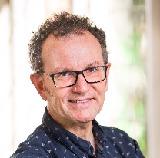Nick Thieberger works for the Pacific and Regional Archive for Digital Sources in Endangered Cultures (PARADISEC) and the University of Melbourne
The distance between major population centres in the Pacific makes it difficult for residents of the sea of islands to access records in their languages. Even if records are stored in national museums or cultural centres, that can be some distance from most of the population. As the internet becomes more widely available, connection to these records becomes more feasible, but that requires the records to be described, digitised, and made accessible.
In Australia in the late twentieth century, collections of tapes of speakers from the Pacific were sitting in the offices and homes of their academic creators, people who were often at the end of their careers. With no obvious home for these recordings it seemed they were likely to be lost. There was no archive whose responsibility it was to preserve these recordings. Some found their way to libraries where they were held as physical objects, but not digitised. In 2003 we set up the Pacific and Regional Archive for Digital Sources in Endangered Cultures (PARADISEC) to digitise these tapes. We have now digitised over 7,000 hours of tape and have built an online service that provides access to them and to an additional 7,000 hours of born-digital records. All of this represents 1,291 languages and takes up some 140 terabytes.
We have worked with regional cultural agencies to find more tapes and to digitise tapes in their collections. We run a regular 'Lost and Found' survey to locate more tapes that need to be digitised, recognising that 2025 has been set as a deadline by the international sound recording community for the life of analog tape.
Current access to these records can provide new interpretations of the original recording and energise new uses, new performances, new ceremonies, based on historical materials, especially when the colonial process has contributed to denigration of traditional culture and a loss of everyday use of the language.
And, of course, it can satisfy a need to hear your own ancestral voices in your own language. This builds a connection across time and space and helps build resilience and confidence in local cultures.
